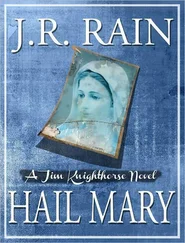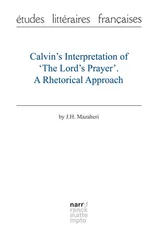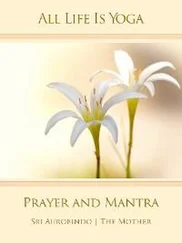Helge Fauskanger - J.R.R. Tolkien’s Lord’s prayer and Hail Mary in Quenya - Syntactical and Etymological Analysis
Здесь есть возможность читать онлайн «Helge Fauskanger - J.R.R. Tolkien’s Lord’s prayer and Hail Mary in Quenya - Syntactical and Etymological Analysis» весь текст электронной книги совершенно бесплатно (целиком полную версию без сокращений). В некоторых случаях можно слушать аудио, скачать через торрент в формате fb2 и присутствует краткое содержание. Жанр: Языкознание, на английском языке. Описание произведения, (предисловие) а так же отзывы посетителей доступны на портале библиотеки ЛибКат.
- Название:J.R.R. Tolkien’s Lord’s prayer and Hail Mary in Quenya: Syntactical and Etymological Analysis
- Автор:
- Жанр:
- Год:неизвестен
- ISBN:нет данных
- Рейтинг книги:5 / 5. Голосов: 1
-
Избранное:Добавить в избранное
- Отзывы:
-
Ваша оценка:
- 100
- 1
- 2
- 3
- 4
- 5
J.R.R. Tolkien’s Lord’s prayer and Hail Mary in Quenya: Syntactical and Etymological Analysis: краткое содержание, описание и аннотация
Предлагаем к чтению аннотацию, описание, краткое содержание или предисловие (зависит от того, что написал сам автор книги «J.R.R. Tolkien’s Lord’s prayer and Hail Mary in Quenya: Syntactical and Etymological Analysis»). Если вы не нашли необходимую информацию о книге — напишите в комментариях, мы постараемся отыскать её.
J.R.R. Tolkien’s Lord’s prayer and Hail Mary in Quenya: Syntactical and Etymological Analysis — читать онлайн бесплатно полную книгу (весь текст) целиком
Ниже представлен текст книги, разбитый по страницам. Система сохранения места последней прочитанной страницы, позволяет с удобством читать онлайн бесплатно книгу «J.R.R. Tolkien’s Lord’s prayer and Hail Mary in Quenya: Syntactical and Etymological Analysis», без необходимости каждый раз заново искать на чём Вы остановились. Поставьте закладку, и сможете в любой момент перейти на страницу, на которой закончили чтение.
Интервал:
Закладка:
hyame, verb pray , attested in conjunction with the imperative particle á(that may indeed be directly prefixed to produce áhyame; as indicated above, it is not quite clear how we should read Tolkien’s manuscript). Hyamewould seem to represent the uninflected stem of a "basic" verb # hyam- pray , never before attested. Earlier we only had Erukyermëfor Prayer to Eru in UT:166, 436. Since the group kymay seem to be abnormal for Quenya (primitive kynormally becomes ty), it has been suggested that Erukyermëmight be a misreading for ** Eruhyermëin Tolkien’s manuscript. This would point to ** hyer- as the stem of the verb pray , at least slightly more similar to # hyam- in the text before us. However, Christopher Tolkien in a letter to David Salo indicates that the reading Erukyermëis certainly correct; the form occurs repeatedly in a typewritten manuscript that was moreover carefully corrected by his father. The # kyer- of Erukyermëis evidently wholly unrelated to the # hyam- of Hail Mary, though both seem to be verbal stems meaning pray (the word Erukyermëwas probably coined about a decade after the Hail Mary-translation was made, found in a text apparently written not long before 1965; cf. UT:7). No plausible etymology for # hyam- can be proposed; it would probably require a primitive stem *khyam- or *syam-, *skyam-.
i1) definite article: i Héru the Lord , i yáve the fruit ; 2) relative pronoun who , both singular and plural: Átaremma i ëa … our Father who is… , tien i úcarer those who trespass/sin . Both usages are well attested before; as for the article, we have for instance i eleni= the stars in Namárië. The phrase i Eru i or ilyë mahalmar eä the One who is above all thrones in Cirion’s Oath in UT:305, 317 includes iused both as an article and as a relative pronoun. For iused as a plural relative pronoun, cf. the phrase i karir quettar those who make words in WJ:391. The Etymologies confirms that iis "in Q…indeclinable article the "; it is derived from a base i- that is defined as that and said to be a "deictic particle" (LR:361). Perhaps we are to understand that Primitive Quendian did not have a definite article as such, but that a particle that originally meant that had its meaning weakened to the (e.g. primitive * i galadâ that tree > Quenya * i alda the tree ). The Romance languages got their definite articles just like this: Their ancestor Latin had no word for the , but the meaning of Latin demonstratives (typically ille , illa ) was weakened to produce articles like la or el . There is nothing in the Etymologies about ibeing used as a relative pronoun as well, but this is not a surprising phenomenon. Cf. for instance German, where the articles der , das , die (for various genders and numbers) are also used as relative pronouns.
ilaurëa, adjective daily , everyday : ilaurëa massamma our daily bread . The word as such is new, but in the middle of ilaurëawe discern the well-known noun aurë day . In earlier editions of The Lord of the Rings , Appendix D mentioned aurëand lómëas the Quenya words for day and night , though this particular piece of information was omitted from the revised edition. In any case, aurëreappeared in chapter 20 of the Silmarillion , Fingon crying utúlie’n aurë, the day has come , before the Nirnaeth Arnoediad (Húrin following up with aurë entuluva, day shall come again , when the battle was lost). The Silmarillion Appendix, entry ur - heat, be hot , defines aurëas sunlight , day . In the Etymologies , the stem ur- be hot was struck through (LR:396), but Tolkien must have restored it later: The word Urimë(or Úrimë) as a name of the month of August, occurring in LotR, Appendix D, is clearly to be derived from this stem, and the entry ur- in the Silmarillion Appendix confirms this. The word aurëwas however not listed in the Etymologies even while the stem ur- persisted there. The added ain aurëmust be seen as an example of a-infixion, parallel to the process that results in such primitive forms as thausâ foul from the stem thus- (LR:393) or taurâ mighty from tur- (LR:395). In Quendi and Eldar , Tolkien stated that words formed by a-infixion "were mostly intensive , as in…[Quenya] taura very mighty, vast, of unmeasured might or size (*tur). Some were continuative , as in Vaire Ever-weaving (*wir)" (VT39:10). In the case of a root like ur-, a-infixion of course cannot be distinguished from a- prefixing , since there is no initial consonant. Whether the resulting stem *aur- is to be seen as "intensive" or "continuative" is a matter of taste; the period of daylight is perhaps perceived as "continually hot" when compared to the colder night. The complete primitive word day must be either * aurê(since the ending - êmay be used to derive words for abstract or intangible things) or * auri(compare primitive arias the source of Q are day in LR:349 s.v. ar 1-). Ilaurëashows a prefix il- that can safely be referred to the stem il- all (LR:361). The same source provides an example of the prefix il- every -; it occurs as part of the word ilqa everything (better spelt ilquaaccording to Tolkien’s later system). WJ:372 also has ilquen everybody (incorporating - quen person ). # Ilaurëthus means everyday as a noun (though this may not necessarily exist as an independent word); to this form the adjectival ending - ahas been added to produce ilaurëa daily , of every day . This word is somewhat similar to amaurëa, said to be a poetic word for dawn , early day (MC:223). While this also seems to incorporate aurë day , the ending - ais apparently not adjectival here, unless this is actually an adjective that is also used as a noun. Ilaurëain any case belongs to the part of speech that we would expect. – For the purpose of dating, it is interesting that the word aurë day is included in the text before us. While a word aure sunlight , sunshine , gold light , warmth had appeared already in the Qenya Lexicon of 1915 (QL:33), this word as a term for day arose relatively late in Tolkien’s conception and apparently does not predate the LotR Appendices. (In the "Qenya" of the 1915 Lexicon, the words for day are kalaof daylight as opposed to night, and lúof a full 24-hour cycle [QL:44, 56] – but in later Quenya, these words reappear with the much more general meanings light and occasion , respectively.) As indicated above, in the Etymologies of the mid-thirties the Quenya word for "day" had been are(LR:349 s.v. ar 1), and this word was still valid in Tolkien’s early drafts for the LotR Appendices: In PM:127 we have a reference to "the Eldarin day or arë ". When Tolkien first coined such a word as mettarë, mentioned in Appendix D as the last day of the year, he may well have thought of this as a compound metta end + arë day . Then it seems that for some reason he rejected ar 1as the stem yielding words for "day". Perhaps wishing to keep such compounds as mettarëunchanged, he introduced the Elvish word ré(LotR, Appendix D: "a day of the sun they called ré and reckoned from sunset to sunset"). Now mettarëcould be re-explained as metta end + ré (24-hour) day , the long énaturally being shortened at the end of a compound. The earlier word aresurvived as áre sunlight , mentioned in Appendix E as the older name of Tengwa No. 31. But here it is also said that árewas earlier áze, indicating that Tolkien now thought of the original stem as as, not ar as it had been in the Etymologies : The sound rwas no longer perceived as original, but arose from original s(via z). For a stem as, see the entry arienin the Silmarillion Appendix; cf. also such a post-LotR source as MR:380, where it is said that the name of the sun was originally Âs, "which is as near as it can be interpreted Warmth, to which are joined Light and Solace". MR:380 also mentions Ázië, "later" Árië, as the name of the spirit of the sun, displaying the same development ( s>) z> ras in áze> áre. But these revisions in Tolkien’s conception necessitated further changes. In earlier editions of LotR, Appendix D quoted the Sindarin word for day (used of a full 24-hour cycle) as aur. This superficially agrees with the Etymologies , where the Noldorin/Sindarin word for day or morning had likewise been given as aur(LR:349). By the time Etym was written, this aurwas probably perceived as the cognate of Quenya ára dawn (for Quenya long ácorresponding to Noldorin/Sindarin au, cf. for instance Q nár flame being the cognate of N/S naur, LR:374 s.v. nar 1-). Sindarin aur day , as quoted in Appendix D in earlier editions of LotR, could similarly have been the cognate of the Quenya word áre sunlight that is mentioned (as the name of a Tengwa) in Appendix E – if Tolkien had not changed the stem from ar to as. In Sindarin, rcannot come from earlier s; nothing like the development s> z> roccurs in Sindarin (or the Noldorin of the Etymologies ). So if Tolkien wanted to keep auras the Sindarin word for day (and he clearly did), a new etymology had to be sought; aurcould not be referred to the new stem as that had replaced ar. Hence Tolkien instead decided to derive aurfrom the (already invented) stem ur having to do with heat , evidently envisioning an a-infixed (or a-prefixed) variant *aur as outlined above: Here the sound rwas original and simply remained unchanged in Sindarin. However, this derivation brought up the question of whether there might not be a Quenya cognate – and this , it seems, is how the Quenya word aurë day arose. Since this word refers to "day" only in the sense of "daylight", it could very well coexist with the new word ré, that means "day" in the sense of a full 24-hour cycle. The word aurëwith the meaning day thus evidently does not predate the LotR, and the fact that it is incorporated in the adjective ilaurëain the text before us, probably places this text in the post-LotR period (after the book was written, but not necessarily before it was published).
Читать дальшеИнтервал:
Закладка:
Похожие книги на «J.R.R. Tolkien’s Lord’s prayer and Hail Mary in Quenya: Syntactical and Etymological Analysis»
Представляем Вашему вниманию похожие книги на «J.R.R. Tolkien’s Lord’s prayer and Hail Mary in Quenya: Syntactical and Etymological Analysis» списком для выбора. Мы отобрали схожую по названию и смыслу литературу в надежде предоставить читателям больше вариантов отыскать новые, интересные, ещё непрочитанные произведения.
Обсуждение, отзывы о книге «J.R.R. Tolkien’s Lord’s prayer and Hail Mary in Quenya: Syntactical and Etymological Analysis» и просто собственные мнения читателей. Оставьте ваши комментарии, напишите, что Вы думаете о произведении, его смысле или главных героях. Укажите что конкретно понравилось, а что нет, и почему Вы так считаете.












